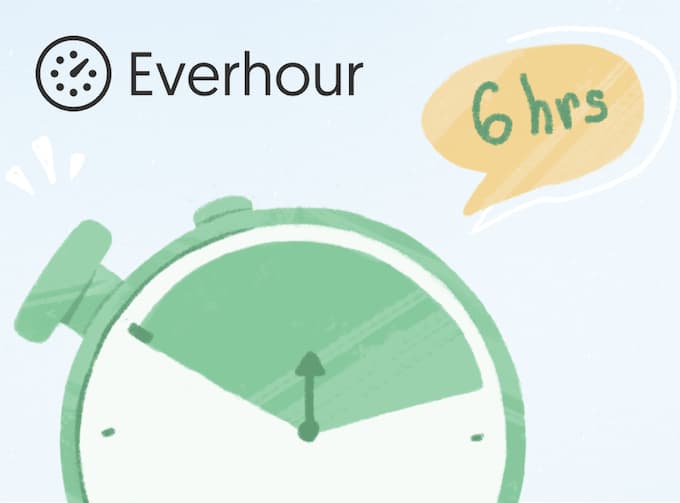Group Decision-Making Techniques: Strategies for Effective Team Consensus

Much like a time tracker meticulously records the passage of moments, group decision-making involves the careful consideration of ideas and perspectives to arrive at the best possible outcome. Making decisions as part of a group can be challenging. First, you need the right people – experts in the field. Next, you need to get them to talk and agree on the issue at hand. And this is where problems begin. Everyone has their own opinion, and no one wants to compromise. Knowing how to apply group decision making skills correctly is the solution you need.
In this article, we’ll help you uncover:
✅ How to establish an effective group decision-making process?
✅ What are the best group decision-making methods?
✅ What are the pros and cons of group decision making?
✅ How to make group decision-making effective?
Group decision-making basics
Before we get to the steps on how to organize the decision-making process, let’s look at what group decision-making is.
Some people fall into the misconception that teamwork and decision-making group activity is pretty much the same.
Group decision-making and teamwork involve multiple individuals that analyze various issues and situations and consider how to solve them. However, as Katenback and Smith point out in their book The Wisdom of Teams: Creating the High-Performance Organization, group decision-making and teamwork have their specific differences. Here are the most significant ones:
| Group member | Team member | |
| Independence | Each group member is independent | Teammates rely on themselves and their mates |
| Leadership | Decision-making groups have a leader | Teams share leadership roles |
| Performance evaluation | Group performance can’t be measured directly | Team performance and work outcomes can be measured |
| Decision-making | Group members discuss, decide, and delegate | Team members discuss, decide, and do the work |
The overall effectiveness of group decision-making depends on many factors. For example, time constraints or any underlying conflicts can impact the group decision-making outcomes. That’s why, before problems occur, it’s vital to establish group decision-making procedures and monitor them along with their implementation.
Group decision-making process (step by step)
Now that we’ve established the basics, below are the steps to implementing the most effective group decision-making process!
1. Planning 📝
At the planning stage, you need to decide how you decide and know it is successful. This occurs in two phases:
First, choose which types of decision-making tools you will use – meetings, brainstorming sessions, etc. You can read more about these below.
Second, you need to determine how you will know that the decision made is a success. To understand that, you need to formulate the success factors or criteria for your decision.
For this, think of the criteria that reflect the goals, values, and objectives for each stakeholder. When considering your criteria, you can also address it from a variety of angles. You can ask yourself the following questions:
- How is it going to work?
- How much will it cost?
- How well will it comply with the existing system?
- How consistent will it be?
- How well will it fit in the existing schedule?
- Or create your own to meet the criteria.
2. Determining alternatives 🤔
At the determining alternatives stage, your expert group should generate and select several alternative decisions. They need to choose from 5 to 9 solutions that best meet the planning session’s requirements. This step is important as it reduces the number of decisions and keeps the group focused on the most effective ones. You could also search for similar solutions in previous situations and consider if they suit the current issue.
3. Selecting the best alternative 💎
It’s time to choose the best alternative from the solutions selected at the determining alternatives stage. To do so, you need to compare each decision to the criteria set at the planning stage of your decision-making process. The solution that meets most criteria is the most effective one.
4. Deployment 📤
At the deployment stage, you bring your decisions into reality. This involves determining the actions and tasks that follow the final decision. It also includes the guiding requirements on how to organize the process.
Everhour is the top choice for small businesses and small to mid-size teams of 5 to 50 members, including professionals like software developers, marketers, designers, consultants, lawyers, you name it!
Seamlessly integrating with popular project management tools like Asana, Trello, and Jira, its user-friendly interface and customizable reports make it the ultimate time tracking solution for small and mid-size teams.
With dedicated support ensuring you receive timely assistance, our team is here to help you promptly and with a smile!
Group decision-making methods
Group decision-making is a subtle process that requires lots of attention and guidance. But it doesn’t have to be simply one big discussion or debate until someone gives in. To make it more effective and less argumentative, some managers prefer to establish group-decision making methods in the form of games and activities. Here are some ideas on how you could make a decision-making process more enjoyable for your employees.
💭 Brainstorming
Brainstorming is a well-known technique that aims at generating as many ideas as possible. For this, you’ll need a group of members. The optimal number is from 5 to 9 people, a group leader, and a flipchart.
The brainstorming process has two stages:
- At stage 1, the group leader describes the situation in detail so that each group member has a clear vision of the problem. Group members suggest their ideas while the leader jots them down on a flip chart.
- At stage 2, after the group suggests all the possible decisions, they evaluate if each decision matches their success criteria.
Sometimes group members may feel uneasy presenting their ideas. To resolve this issue, you could suggest they do brainstorming anonymously in a voting app, chat, or by email.
💁♀️ Nominal group thinking
Nominal group thinking resembles brainstorming, though it is better structured and encourages independent acting rather than working in a group. Participants don’t need to communicate with one another. As a result, they aren’t biased towards the opinions of dominant personalities.
Nominal group thinking procedure:
- Group members write their ideas on a piece of paper and hand them to the group leader.
- The group leader puts the ideas on a flipchart.
- Group members, in their turn, comment on the ideas and suggest their improvements or clarifications.
- After the participants have discussed the ideas, they evaluate each idea’s pros and cons and vote for the best ones. Group participants can do the voting on pieces of paper or rank the ideas by priority.
- The group leader collects the votes and comes up with the results on the best solutions.
🙋♂️ 🙋♀️ Delphi technique
Delphi technique works best with a group of experts that work remotely. This way, group members don’t need to gather in one place to find the best solution to the problem. In the Delphi technique, each member is usually an expert in a particular field, so they have their own vision of handling an issue.
Delphi technique procedure:
- The facilitator defines the problem and selects a panel of experts.
- The experts suggest possible solutions to the problem in the form of questionnaires. These questionnaires should have a general idea about the problem.
- After the experts fulfill the questionnaires, they hand them to the facilitator.
- The facilitator analyzes the answers and composes a set of questions based on the given answers. The second round of questionnaires goes deeper into the problem and its solution.
- The facilitator repeats the process until the experts come up with the solution.
🤷♂️ 🤷♀️ Dialectical inquiry
The dialectical inquiry is another group decision-making technique that involves teamwork and concentrates on the discussion of alternatives. The method helps to uncover the hidden problems that may appear within the issue. It can also help decide whether to go with a decision or not if there’re too many advantages and disadvantages to decide upon. Think of it, like a tie-breaker.
Dialectical inquiry procedure:
- The decision-making group is divided into two opposing teams
- The pros team suggests their ideas, and the cons team shares their comments and reasons for them
- The teams change places
- Now it’s time for the cons team to express their thoughts and for the pros team to debate
- The leader decides whose arguments were stronger and focuses on the appearing issues.
The technique can be modified into a devil’s advocacy practice. It means that one group member counters the participants’ ideas, suggesting opposed ideas hence revealing the potential problems.
Pros and cons of group decision-making
When considering group decision-making, we should mention that its success depends on many factors. Some of them are team manager skills, interpersonal connections between the team members, demographic diversity, and others.
Despite the diversity of many factors, experts managed to develop the general pros and cons of group decision-making.
Advantages of group decision making
Group decision-making allows its members to:
✅ Make well-informed expert decisions due to a variety of experts involved in the process
✅ Come up with unconventional ideas, especially if a group has members from diverse cultural backgrounds
✅ Reveal and prevent hidden challenges and bottlenecks that may appear later with the chosen decision
✅ Better understand the follow-on tasks and requirements when working on the issue solutions as all the members take part in their generation from the start
✅ Enhance group collaboration due to the active involvement in problem-solving through discussions and debating, and collective work.

Why is Group Collaboration Crucial
What could be more beneficial for your business than a strong team of professionals who know their work? A strong team of professionals that collaborates!
Disadvantages of group decision making
No approach or technique doesn’t have its disadvantages. Here are the main disadvantages of group decision-making:
❌ The absence of responsibility. The group makes the decision collectively, and nobody personally bears the consequences of a failure
❌ It can be ineffective and slow. This happens if a manager poorly organizes the group-decision making process
❌ Falling into group thinking. The groupthink phenomenon often appears within a group of people who strive to avoid conflicts or too much discussion. As a result, it leads to illogical and adverse outcomes
❌ Coming up with risky solutions. Sometimes a group can change from groupthink to a risky shift phenomenon. This is when a group arrives at dangerous solutions that would never occur in individual decision-making. A risky shift may happen when individuals don’t feel the personal responsibility for the decisions made and leave it to the group’s discretion.
How to make group decision-making most effective
Here, we’ve gathered some of the best tips on how to make group-decision making more effective and less tedious. Using these makes group decision-making a less stressful, more effective process:
1️⃣ Keep your groups small
The larger the group, the more biased its decision is. Your groups shouldn’t exceed five members per group. Otherwise, the participants will feel less responsibility for the decisions made and are more likely to fall into groupthink.
2️⃣ Make your groups diverse
Not just a way to please HR. People from different backgrounds can come up with unusual but viable ideas. These ideas can significantly benefit your business and lead to unexpected outcomes. This rule also works for heterogeneous groups. When men and women work together, they better imply their diverse skills and fulfill complex tasks faster.
3️⃣ Make the environment safe
The best way to make the working environment safe when everyone can freely share their opinions is to involve some anonymity in the group decision-making process. For this, collect suggested ideas and critics independently. This will help ensure your employees that you’re genuinely ready to listen to their opinions and statements.
4️⃣ Don’t entirely rely on the experts
You may know the strengths and weaknesses of each of your employees. Nevertheless, when searching for new ideas and non-obvious solutions, listen to every participant. This way, you avoid dominant opinions and groupthink biases.
Visual learners among us may want to take a look at this video covering some of the basic ground rules to making better decisions in groups:
Wrap up on group decision-making
Group decision-making is an integral part of any profitable business. And you can’t make these decisions without relying on a team of experts. Organizing an effective group decision-making process within your company requires a little work, but it’ll all be worth it with professional management skills and patience.
We, at Everhour, hope that you’ve learned how to establish a group decision-making process and successfully manage it!

All-in-one time management system for your team
Estimate tasks, set budgets, customize reports – direct in your project management tool.
✔️ Asana time tracking
✔️ Trello time tracking
✔️ Basecamp time tracking
✔️ Jira time tracking
✔️ GitHub time tracking
✔️ ClickUp time tracking
✔️ Monday time tracking
